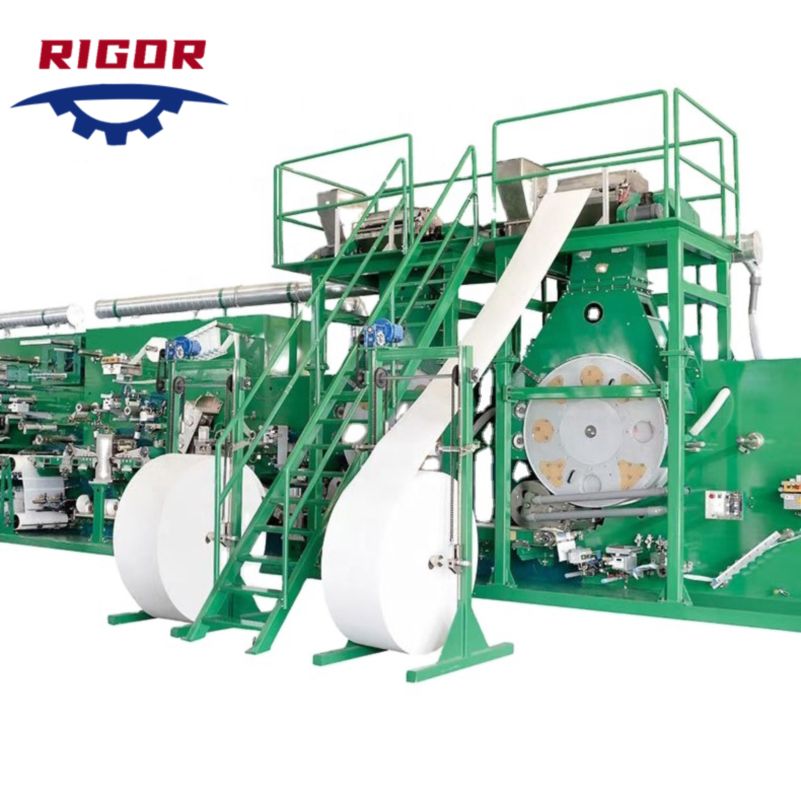Diaper manufacturing involves a series of processes that transform raw materials into finished, high-quality disposable diapers. The specific manufacturing process will vary depending on the type of diaper being produced and the manufacturer’s specific requirements.
Here are some common steps involved in diaper manufacturing:
Material preparation: The first step in diaper manufacturing is to prepare the various materials that will be used to make the diaper, including the absorbent core, backsheet, and topsheet. The materials are typically made of cellulose pulp, superabsorbent polymers, and nonwoven fabrics.
Cutting and shaping: The materials are then cut and shaped to the desired size and shape. This can be done using a variety of cutting and shaping techniques, including rotary die cutting, flat bed die cutting, or ultrasonic cutting.
Assembly: The various components of the diaper, including the absorbent core, backsheet, and topsheet, are then assembled into a finished product. This can be done using a variety of techniques, including ultrasonic bonding, thermal bonding, or adhesive bonding.
Elastic application: Elastic is then applied to the sides of the diaper to provide a secure fit. This can be done using a variety of techniques, including hot melt adhesive, ultrasonic bonding, or heat sealing.
Inspection and quality control: The finished diapers are then inspected and tested to ensure that they meet the desired quality standards. This can include visual inspection, absorbency testing, and leak testing.
Packaging and distribution: The finished diapers are then packaged into individual packets or containers and prepared for distribution.
Diaper manufacturing requires specialized equipment and expertise to ensure that the finished product is of high quality and meets the specific requirements of the manufacturer. diaper manufacturing It’s important to choose a reliable and experienced manufacturer to ensure that the diapers meet the desired quality standards and are produced efficiently and cost-effectively.
Disposable diapers are subject to several quality standards to ensure that they meet the desired performance and safety requirements.
Here are some of the common quality standards for disposable diapers:
Absorbency: Diapers should be able to absorb a certain amount of fluid without leaking or causing discomfort to the wearer. The absorbency of a diaper is typically measured by the amount of fluid it can hold, such as grams per square meter (gsm).
Leak protection: Diapers should be designed to prevent leaks, even under heavy use. Leak protection can be achieved through the use of elastic leg cuffs, absorbent materials, and other design features.
Comfort: Diapers should be comfortable for the wearer, with a soft, breathable material that does not cause irritation or discomfort.
Fit: Diapers should fit the wearer properly, with a snug but not tight fit that allows for movement and prevents leaks.
Safety: Diapers should be safe for use, with materials that do not cause skin irritation or other health issues. They should also be free from harmful chemicals and substances, such as phthalates and heavy metals.
Environmental impact: Diapers should be produced using sustainable and environmentally friendly practices, with minimal waste and pollution.
There are several organizations that set quality standards for disposable diapers, including ASTM International, the European Committee for Standardization (CEN), and the International Organization for Standardization (ISO). Manufacturers can also develop their own quality standards and specifications to ensure that their diapers meet their specific requirements and the needs of their customers.

